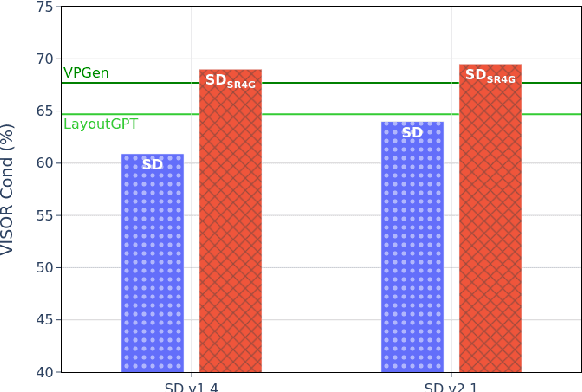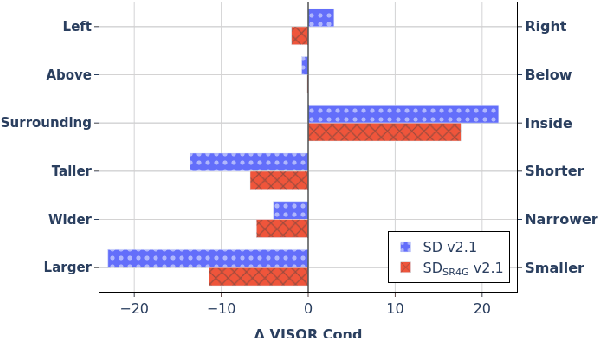Improving Explicit Spatial Relationships in Text-to-Image Generation through an Automatically Derived Dataset
Paper and Code
Mar 01, 2024



Existing work has observed that current text-to-image systems do not accurately reflect explicit spatial relations between objects such as 'left of' or 'below'. We hypothesize that this is because explicit spatial relations rarely appear in the image captions used to train these models. We propose an automatic method that, given existing images, generates synthetic captions that contain 14 explicit spatial relations. We introduce the Spatial Relation for Generation (SR4G) dataset, which contains 9.9 millions image-caption pairs for training, and more than 60 thousand captions for evaluation. In order to test generalization we also provide an 'unseen' split, where the set of objects in the train and test captions are disjoint. SR4G is the first dataset that can be used to spatially fine-tune text-to-image systems. We show that fine-tuning two different Stable Diffusion models (denoted as SD$_{SR4G}$) yields up to 9 points improvements in the VISOR metric. The improvement holds in the 'unseen' split, showing that SD$_{SR4G}$ is able to generalize to unseen objects. SD$_{SR4G}$ improves the state-of-the-art with fewer parameters, and avoids complex architectures. Our analysis shows that improvement is consistent for all relations. The dataset and the code will be publicly available.
 Add to Chrome
Add to Chrome Add to Firefox
Add to Firefox Add to Edge
Add to Edge